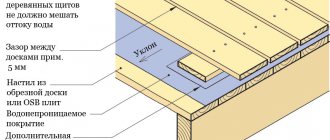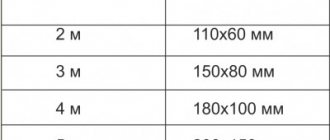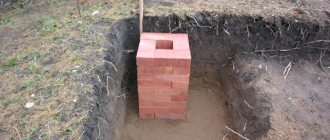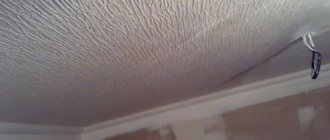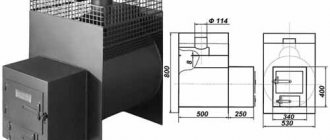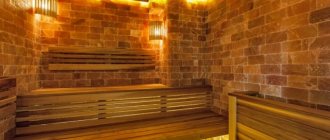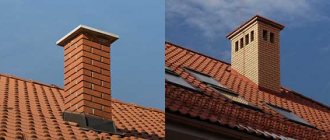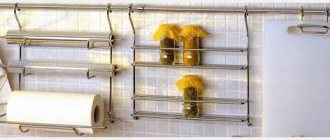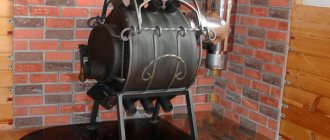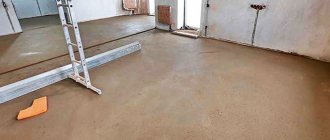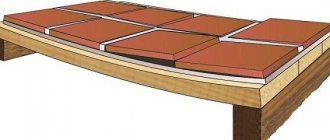Cement-sand floor screed is used as the most popular and universal coating, which allows you to obtain the necessary leveling for laying decorative material. This option has many positive parameters, among which are additional sound and heat insulation. An important aspect is that all work is carried out exclusively independently.
Features and Benefits
The weight of one square meter of cement screed 1 centimeter thick averages from 16 to 20 kilograms. Screeds using expanded clay or polystyrene weigh a maximum of 18 kilograms, self-leveling mixtures show a figure of 16 kilograms.
In cases where differences in the subfloor reach 3 centimeters or more, a cement-sand floor screed is the best option. The screed can be tied and firmly adhered to the base, or unbound (floating), when the layer is placed on an additional layer (usually a mixture of sand and expanded clay), which acts as thermal insulation and protects against moisture.
The thickness of the cement-sand screed can be different. On average, the area can support a weight of up to 300 kilograms. If you need to increase the strength and ability to withstand different loads, the screed is reinforced with steel rods or mesh. The frame is placed on top of the expanded clay layer or attached to special fasteners or sheets of plasterboard.
Sand-cement screed has a porous structure, due to which it can absorb moisture. Therefore, the layer inside the building must be insulated with a special membrane, or waterproofed with bitumen mastic.
It is quite possible to carry out all the work on arranging a floor screed with your own hands. The main thing is to do everything according to the rules and preliminary calculations. When the screed has hardened and gained full strength, it acquires a rich gray tint.
The layer should be even and dense. If cracks or chips appear on the surface, it means that the proportion of the components was violated or the pouring technology was not followed, or the rules for drying the screed were ignored.
The main advantages of cement-sand screed:
- High-quality leveling - for any type of decorative coating.
- Durability – the service life of a concrete floor is on average 50 years.
- The ability to disguise communications inside the screed - sewer, water pipes, wires, underfloor heating systems, etc.
- Strength - the screed can withstand any load from furniture, equipment, etc.
- Good sound insulation - the screed almost does not conduct sound, and if it is also accompanied by a layer of sound insulation, the effect is magnificent.
- Thermal insulation - the minimum thickness of the screed and itself retains heat well, but if necessary, you can lay a layer of thermal insulation, ensuring the best characteristics.
- Minimal shrinkage - provided that the cement for the screed has been chosen of high quality, and the mixing is done correctly with the correct proportions.
- Quite a low price when compared with alternative methods of flooring.
Among the disadvantages that sand-cement screed may have are the following: large weight (depending on the thickness of the layer) and considerable pressure on the floor, long drying time (during which no further work can be performed - and this is about a month), the difficulty of creating a perfectly flat surface with your own by hand (but you can pour a self-leveling mixture on top), a long and labor-intensive pouring process.
Carrying out preliminary calculations and a properly executed screed allows you to eliminate most of the shortcomings and achieve an excellent result in the form of a strong, durable, even floor that is ready for further finishing.
Types of cement screeds
There are many options for making floors made of cement-sand mortar. The proportions of the components can be different, you can add various additives and plasticizers, choose a polymer-cement screed and make floors with a 3D effect, etc. But there are two main types of screed arrangement: tied and untied screeds, as well as floating.
A bonded type cement screed is installed when pouring a layer of up to 4 centimeters. In this case, the base becomes a single monolith with walls and floor. The rough foundation needs to be prepared - cracks must be sealed, large holes, bumps and pits must be eliminated. Small defects with a difference of up to 3 centimeters can be left.
Before making a cement-bonded floor screed, it is advisable to go over the base with a wire brush to improve adhesion. The filling composition should resemble sour cream in consistency and hardens within 20 minutes after installation. Large premises are filled in stages. The screed takes up to 40 days to dry, maintaining the temperature and humidity conditions under the film.
An untied screed must be mounted on an already ideal surface. The base should not absorb moisture. The layer when installing this type of screed can be 5 centimeters or more. Before pouring, no primer is used, nor are methods for increasing adhesion.
A floating screed is installed when you need to make a layer of 5-8 centimeters. Cementing does not involve contact of the screed with the subfloor, since heat/waterproofing and different materials are installed between the layers. Typically, reinforcing mesh is used; fiber fiber is added to the solution, which increases the strength of the layer and eliminates the risk of crack propagation.
A floating (including reinforced) screed does not involve too much weight, since, despite its considerable thickness, it is poured using a semi-dry technology: the solution is mixed with a reduced volume of water, so it resembles wet sand in structure more than a liquid mixture.
Expansion joints
Two to three days after laying the screed, it is necessary to make expansion (damper) joints in it, which will prevent the slab from cracking in the future and improve its insulating qualities.
The width of such a seam should be 3-4 mm, the depth should be at least 30% of the thickness of the leveling layer.
Wall expansion joints are filled with elastic gaskets or silicone.
A grid of seams over the entire area of the room is planned based on its size and shape. So, in a rectangular room with an area of no more than 30 square meters. meters and an aspect ratio of 1 to 1.5, expansion joints on the surface of the screed can be omitted.
If the screed in the apartment was carried out in all rooms at the same time, then the seams should separate one room from another along the line of doorways, delimit the design differences in heights in the screed (steps), and go around the perimeter of the column (if any).
When laying seams, you should take into account the location of the connecting lines of the floor and the joints of the reinforcing mesh (if it was used).
In the future, the location of the seams will need to be taken into account when installing the final finish.
Proportions of cement and sand
The grade of cement and composition of components, proportions are determined in accordance with the type of screed, expected requirements, loads, and operating conditions. The main components are sand and cement. To fill the floor in an apartment, M200 concrete is usually sufficient, to create which you take part M500 cement and 3 parts sand. Water is added until the optimal consistency is obtained (about 1 liter per 1 kilogram of cement).
Thickness and calculation of floor screed
The composition of the cement-sand mortar is simple and unchanged: cement, sand, water. Approximate calculations are given below (they may vary depending on the required floor characteristics and the brand of cement used).
The weight of a cubic meter of solution reaches 2000 kilograms. On average, a cubic meter of mixture contains 450 kilograms of cement and 1,300 kilograms of sand. A screed 1 centimeter thick requires 20 kilograms of solution - which means the consumption of components is 4.5 and 13 kilograms, respectively.
If you don’t want to prepare concrete with your own hands and think about what kind of cement is needed, what ratios of materials, etc., you can purchase a ready-made dry mixture. Its cost will be higher than a solution prepared independently, but the result will be of high quality, with the properties and parameters of the finished coating established by the standards.
In addition to cement, it is important to choose the right sand - without impurities (clay, silt, dust) that reduce the strength characteristics of the future screed layer. Usually they take washed river sand, or, in extreme cases, quarry sand.
To fill a standard screed, you will need to purchase a primer - its consumption is about 350 milliliters per square meter of surface. Thanks to the primer, it will be possible to ensure high-quality adhesion of the base and mortar, guaranteeing the strength and reliability of the screed.
Determining the quality of work
Bathroom floor screed
So, the screed has dried. How to determine its quality?
- Firstly, in color - it should be gray.
- Secondly, by curvature. To do this, take the rule in your hands and walk it through different parts of the room. The maximum gap per two meters of length is 4 mm.
- Thirdly, along the horizon. The deviation of the plane from this indicator should not exceed 0.2%.
- Fourthly, in terms of the quality of the filling. It is important here that the screed does not “bounce”. What does it mean? You take a wooden hammer in your hands and tap the floor with it. The sound should be ringing. If emptiness is heard, this indicates that the screed mortar has peeled off from the base. This is a significant defect that will lead to large expenses. Although this phenomenon is rare if you carried out all the steps correctly.
By the way, minor defects in curvature and horizon can be quickly corrected by filling the floor with a thin layer of self-leveling mortar. Coiling is more difficult to deal with. To do this, the screed section must be dismantled, the base must be re-primed and the mixture must be poured exactly along the boundaries of the section.
Dry mixes
Do-it-yourself cement floor screed can be done using ready-made dry mixtures. Their main advantage is the absence of the need to calculate the proportions of the components included in the composition and, as a result, stability of characteristics and excellent results. The manufacturer prepares the mixture, the foreman’s task is to calculate the required volume of the mixture to complete the work and mix the solution on site, adding water.
Dry building mixtures are also distinguished by their ease of preparation, density, plasticity - they are comfortable to work with, they often demonstrate improved characteristics due to the introduction of various additives, plasticizers, etc. into the composition. All you need is to look at the mixture consumption in the instructions, purchase the required number of bags (25-50 kilograms each), add water according to the instructions and work.
Mixtures for screeding using dry and semi-dry technology are available on the market. Thus, the polycement mixture is more convenient to work with due to its elasticity; it is often used in industrial and civil construction to create new structures and restore existing ones.
Self-leveling mixtures for floor screed are very popular - you just need to pour this solution onto the surface, it will distribute itself evenly and perfectly evenly. True, it does not guarantee high strength and is inferior to dry mixtures reinforced with metal fiber fiber. The self-leveling mixture option is ideal for residential premises where the load on the floor is light. Lightweight concrete mixtures are also used here.
The modern market offers a large selection of dry mixtures of domestic and foreign production. The range is very wide and choosing an option even for fairly specific requirements is not difficult. While cement for floor screed one way or another assumes certain properties and parameters, ready-made mixtures can give very different effects due to the introduction of various components into their composition.
An example of such a product would be the Knauf Ubo mixture from one of the best manufacturers in the segment (German company Knauf). This is an ideal option for preparing CSP, which has a density that is 4-5 times greater than that of classic concrete. The screed is resistant to any temperature changes and is perfect for installing underfloor heating systems. Provides good sound insulation due to the introduction of polyethylene modifiers into the composition.
To fill one square meter you need about 5 kilograms of the mixture. And this choice is justified for pouring in a residential area due to the ease and simplicity of installation and the excellent performance characteristics of the floor.
DIY cement screed
Before cementing the floor, it is necessary to carefully study all stages of the work. First of all, the base needs to be prepared for pouring, and then just lay the screed. All stages are important, so each one needs to be given enough attention.
Preparatory work
First you need to mark the future screed, determining the layer height and evenness. To do this, it is best to use a laser or ordinary construction level. Laser helps to correctly install beacons, which will ensure faster leveling of the mixture and a high-quality result.
The laser level is placed on the base, the beam is projected, and the horizon line is determined. Then, 30 centimeters from the wall and with the same step, a parallel line is further marked, portions of the solution are laid out along it, with a profile on top. You can use special beacons on the clamps. The poured mixture is then equalized using the beacons or profile. But before that, a number of important works need to be completed.
Stages of foundation preparation:
- Removing the old screed.
- Cleaning the surface from dirt, debris, dust.
- Apply an adhesion primer using a roller/brush.
- Filling with a layer of expanded clay and sand (if necessary, thermal insulation is laid), the thickness of which is up to 10 centimeters. Compaction of the layer with moisture.
- Design, installation of pipes, wires and other communications that are planned to be laid in the screed.
If there are too serious irregularities (which exceed the planned thickness of the screed), it is necessary to eliminate them: fill cracks, fill potholes, cut off bumps, etc.
Preparing the mixture
Before concreting the floor, prepare the solution needed for the screed. There are several ways to obtain a cement-sand mixture: purchasing ready-made dry mixture and mixing it on site, ordering the required volume of liquid mortar from the factory (this service is available both in Moscow and in the regions), independently determining the proportions of the components and preparing concrete.
If you choose the option of preparing the mixture yourself, then take cement and sand in a ratio of 1:3, fill it with water until the desired consistency is obtained. Next, the solution is poured onto the floor, leveled along the beacons, and allowed to harden.
The process of preparing semi-dry screed:
- Lay polyethylene film on the ground, pour cement and sand on top of it, mix with a shovel in the direction from bottom to top, trying not to disturb the shape of the cone.
- Make a hole in the center of the cone, pour water into it and mix everything.
- Without stopping mixing the components, pour the dry mixture around the edges, trying not to break the integrity.
- When the mass becomes thick, it is ready for installation; it must be used within 20 minutes.
- Leveling the screed within 1.5 hours.
To create a wet cement-sand mixture, high grade cement is used. Take a third of a bag of cement onto a bag of sand and fill it with water (about the same amount as the binder taken). The easiest way to do the mixing is in a container with a volume of 25-30 liters.
During the preparation of the mixture, you need to control the color of the solution - it should be gray: too dark indicates an excess of cement, red indicates too much sand.
Fill
Before pouring begins, the room must be covered around the perimeter with damper tape, which will protect the screed from moisture, temperature changes, and pressure. Laying the mixture begins from the corner farthest to the door, one person pours and smoothes the solution, the second at this time prepares the next portion. It is best to fill the base with an area of 30-50 centimeters at a time (this is the step at which beacons are laid).
Adjacent zones of two pours are mixed to a depth of 10 centimeters. The strip at the doorway is done last. The screed hardens within 2-3 hours, acquiring 50% strength after 2-4 days. Full ripening depends on the thickness of the screed and the volume of water in the mixture. On average, in ordinary residential premises the screed hardens by 1 centimeter per week.
Every day the screed is sprayed with water to prevent the top layer from quickly hardening while the bottom layer is still soft. 1.5 hours after pouring, the surface can be leveled by sliding on wedges; the bumps that appear later are knocked down manually.
Rub the solution with a mixture of cement and sand in equal proportions with the addition of water. During grouting, the surface should be sprayed generously with water.
Installation of beacons
Beacons are straight metal slats. For beacons, 10 mm plaster beacons, a ceiling profile for plasterboard (PP 27×27) or a rectangular pipe are suitable.
Beacons are set strictly at a horizontal level, according to the marks made. The first beacons are placed against the wall according to the marks made. The pitch between the beacons is 1200-1500 mm. The rule for leveling the screed is purchased a little longer than the pitch between the beacons. The beacons are fixed with cement mortar.
Note: With certain skills, beacons can be made from cement mortar in the form of a mound, aligning the crest of the mound according to a long level-rule.
The beacon mount should dry for 90-120 minutes.
Important! The joints of the slabs and communication pipes passing through the base must be waterproofed. For waterproofing, it is cheaper to use polyethylene; it is more expensive to use a special liquid solution for waterproofing. It is sold ready-made in buckets.
How to dry cement floor screed correctly
After cementing is completed, no further work with the screed is carried out until the layer has fully gained strength - and this is about 28 days. In the first days, you even need to walk carefully on the floor.
What to do after pouring the screed:
- Removal of beacons - after 3-4 days. After deepening, they are sealed with mortar.
- Water the screed with water and cover it with film for the first 3-7 days.
- Film removal – after 14 days.
- Further work will be completed in 28 days.
The film can be covered with wet sawdust or sand so that it retains moisture better.
Cement-sand screed is an excellent solution for creating a smooth, durable, high-quality base that is ready for further finishing. You can make the screed yourself by preparing it from a ready-made dry mixture or a certain amount of ingredients. If the technology is followed, such a coating will last about fifty years.
Installation of damper tape
To make a damper tape, you can use any rolled material for waterproofing. It must be cut into pieces 30-40 cm wide. Then the strips must be laid around the perimeter of the room so that the cut extends onto the wall to a height slightly greater than the thickness of the screed, and also passes along the floor. Such damper tapes are needed to protect walls from moisture. To ensure good adhesion of the strip to the walls, you need to glue it with any adhesive in increments of 20-50 cm. After filling the base, the tape will press itself against the wall.
Then, to create a damper joint between the base and the wall, you need to use any rolled thermal insulation material 1 cm thick. It is cut into pieces 8-15 cm wide and glued to the wall on top of the waterproofing layer. As a result, the screed will not stick to the wall, which will reduce the internal stress in it and protect the surface from cracking. Soft insulation will allow the base to freely expand or contract as a result of changes in temperature and humidity in the room.
